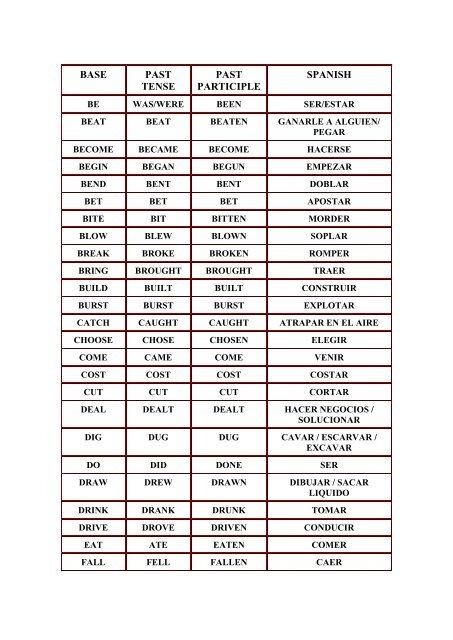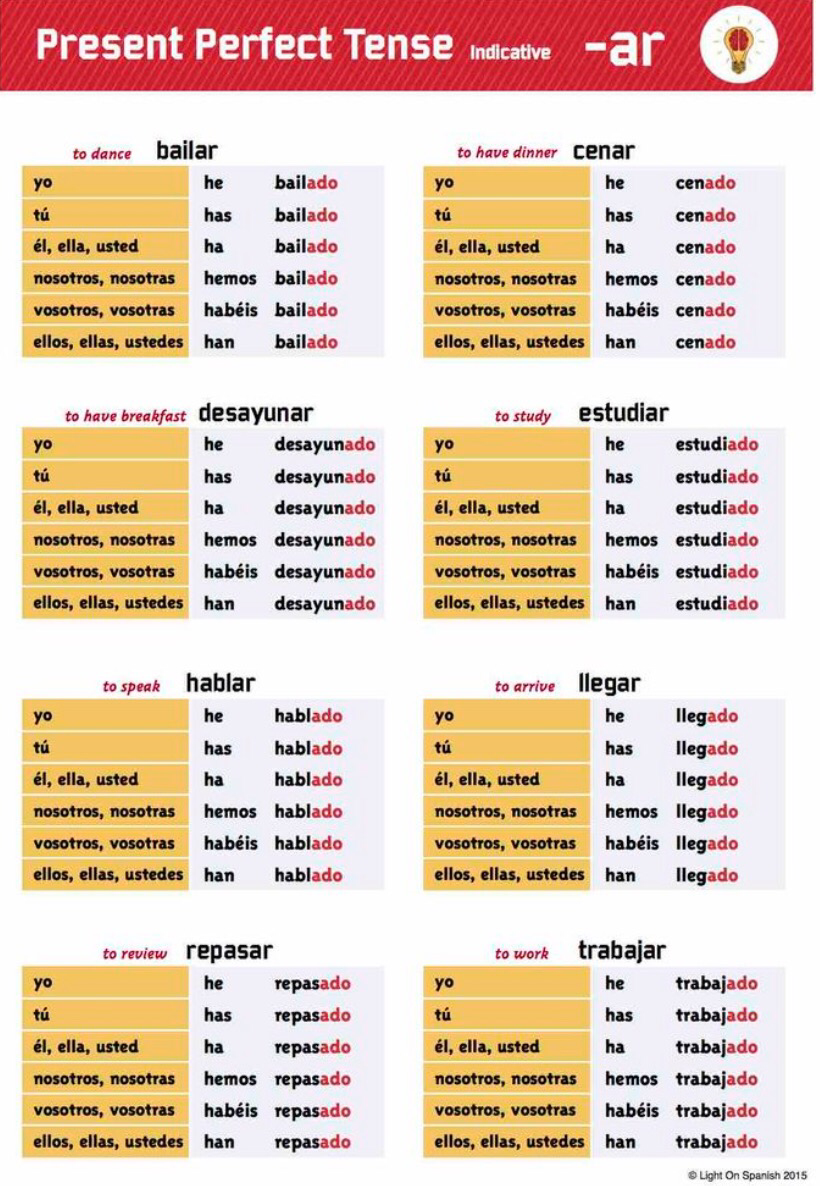

Usually, Spanish past participle endings are ‘-ado’ and ‘-ido’ which is the equivalent of English verbs ending in ‘-ed’ or ‘-ing’. Depending on the context, they can be used to: Describe people and things (adjectives) Conjugate Spanish perfect tenses. Think you’ve got it? Test yourself on Spanish past participles: A Spanish past participle is a verbal form.

Most irregular verbs have irregular past participles: abrir Take the final two letters off of the infinitive and add -ido. For regular -er and -ir verbs forming the past participle in Spanish is nearly as simple. So the Spanish past participle of hablar will be hablado. Note all regulars verbs are in this category.

There are some verbs change only in past but is the same in participle past too. There are some verbs don´t change in present to past nor participle past. When the stem ends in a vowel, the ending is – ído with an accent on the i. To form the past participle, simply drop the infinitive ending (-ar, -er, -ir) and add -ado (for -ar verbs) or -ido (for -er, -ir verbs). To form the Spanish past participle for regular -ar verbs take off the final letter of the infinitive and replace it with -do. VERBS IN PAST,SPANISH,PAST.PARTICIPLE,GERUND. Most regular and some irregular Spanish verbs conjugate the past participle by dropping the infinitive ending to find the stem, then adding the past participle ending for that type of verb: Pero and Sino & Past Participle by Paige Dowell - November 25, 2013.


 0 kommentar(er)
0 kommentar(er)
